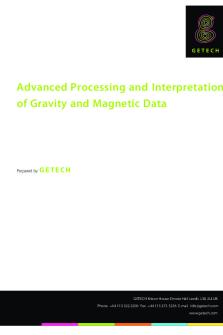RISB-interp - RISB Interpretation PDF

| Title | RISB-interp - RISB Interpretation |
|---|---|
| Author | Sarah Bless Sanchez |
| Course | Clinical Psychology |
| Institution | Far Eastern University |
| Pages | 7 |
| File Size | 120.8 KB |
| File Type | |
| Total Downloads | 61 |
| Total Views | 595 |
Summary
ROTTER'S INCOMPLETE SENTENCES BLACKBy: Julian RotterINTRODUCTION Verbal associations to verbal stimuli have four decades occupied a central place in personality study in the development of techniques of psychological analysis. Single word associations to single word stimuli have never been an ideal ...
Description
ROTTER'S INCOMPLETE SENTENCES BLACK By: Julian Rotter INTRODUCTION Verbal associations to verbal stimuli have four decades occupied a central place in personality study in the development of techniques of psychological analysis. Single word associations to single word stimuli have never been an ideal material. The responses are too staccato, the full meanings are too difficult to grasp. On the other hand, free association to constantly changing and unidentified stimuli, as in the analytic procedure, or in unstructured interviews, do not provide the examiner with a stake background from which to draw his interferences. Sentence completion, lying mildway between these two techniques offers an almost ideal compromise. Furthermore, by a giving subject an opportunity to reveal himself without committing himself, the sentence completion may be constructed to meet the primary requirement of the projective method. The individual may be permitted to behave in a way which altogether characteristics of him and consistent with the structure of his whole personality. Sentence completion tests have usually approached the individual directly. They have asked for a conscious report on problems, and therefore attacked and exposed the subject. The subject's conscious attitudes concerning more or less unconscious trends could be drawn. DEVELOPMENTAL BACKGROUND The Incomplete Sentence Blank (ISB) was originally developed for use in the Army Air Forces convalescent hospitals during World War II. At that time a serious need was felt for a screening test that could be given to a large groups of individuals to evaluate adjustment and fitness for groups of individuals to evaluate adjustment and fitness for return to duty. Rotter and Willerman found that self-rating scales and more structured personality tests did not allow sufficient freedom of response and had not proved to be sufficiently discriminative. On the other hand, projective tests like the Rorschach and the TAT had problems of scoring and interpretation, and projective tests that could be more easily scored has proved inadequate when investigate experimentally. Rotter and Willerman then developed the various versions of similar tests used by Hutt, Rotter,and Gillman also note the influence of Cameron's earlier work. PROPONENT'S BIOGRAPHY The sentence completion method has its origins in the work of Ebbinghaus, Kelly, and Traube, who used the method to measure intellectual variables. Though there have been more recent attempts to use the test to investigate intellectual capacity, it has been used primarily in recent years as a device for personality assessment. Payne and Tendler are generally credited with being the first to use sentence completions for personality assessment. Since that time, sentence completion methods have become increasingly more popular and the sentence completion has become a regular part of a standard clinical test batteries. The essence fragment or stem, which he is asked to complete. The instructions, content, and structure of the stem vary from form to form, as do the manner of categorizing the responses, but the method has generally attractive features. The content of the stems may be adapted to meet specific clinical and research purposes, and the method lends itself to group administration.
1
Sunberg conducted a national survey of psychologist's to determine the psychological tests most frequently used by them and their organizations. In that survey, all sentence completion tests as a group ranked fourteenth in frequency of use. The ISB was the only specific sentence completion test to be listed individually, and it ranked sixty first. Ten years later, in the survey conducted by Lubin, Wallis, and Payne, the ISB ranked as the tenth most frequently used individual test of the 149 tests in the survey. In the most recent study by Lubin, Larsen, and Mantarazzo, they found the ISB to rank twelve in frequency of use. THEORETICAL FRAMEWORK Most projective technique like the Rotter's Incomplete Sentences Blank reflect the influence of psychoanalytic concepts. Although there are also scattered attempts to lay a foundation in stimulus responses theory and in perceptual theories of personality. It should be noted, of course that the specific techniques need not to be evaluated in the light of their particular theoretical slants of historical origins. NATURE OF THE TEST The ISB is widely used in clinical, research, and in industrial settings. The measure's versatility allows it to be used in several ways depending on one's purpose. First, using the objective scoring system to arrive at an overall adjustment score, one can use the measure as a screening device to determine, for example, of, new incoming college students which one's may be in need of counselling, of visitors to a health service which ones may psychological factors associated with their medical complaints, or of clients in a mental health clinic waiting list which ones are most urgently in need of help. A second use is a clinical instrument to obtain specific information about a patient. For example, the ISB is often used as part of the intake paperwork completed at many clinics or hospitals, where its purpose is to give the clinicians a sense of the person and his or her concerns before meeting for the first time. A third major use of the ISB is in research. One of the strengths of the ISB is its scoring system, which yields a numerical score indicating and overall level of adjustment. Another research use of the ISB is that because it provides free responses to the sentence stems, this material can be examined and analyzed in a variety of ways for special purposes.
2
TEST DESCRIPTION The RISB consists of 40 items, each containing a sentence stem which the examinee uses to create a complete sentence dealing with the content of the item. Sample is shown below: Sample RISB items 1. I like ____________________________________________________ 2. The happiest time __________________________________________ 3. I want to know ____________________________________________ 4. Back home _______________________________________________ 5. I regret __________________________________________________ The RISB is available in three forms: Adult, College and High School. These three forms are identical except for the wording of a few stems, which are changed to make them appropriate for the different populations of interest (e.g., the stem "In Scholl" on the Adult form reads "In high school" and "In the lower grades" on the College and High School forms, respectively). The 40 items of the RISB are printed on the front and back of a single 8 1/2-by11 inch page. The RISB generally is considered to be a semi-structured projective test, because the items consist of sentence items which must be woven into a complete thought by the examinee. OBJECTIVE The ISB can be used alone or as part of battery of psychological tests to gather specific information about the subject's thoughts, feelings and attitudes, or in its capacity as a projective test, to be interpreted to obtain better insight into person. The measure also can be used to assess pre to post treatment change using either the objective scoring system (especially in group comparisons) or clinical interpretations of subject' responses. ADMINISTRATION Administration of the ISB is very easy. The measure can be administered individually or in groups and needs few or no instructions, as the measure is fairly self-explanatory. The instructions for the ISB read: "Complete these sentences to express your real feelings. Try to do and complete every sentences. Be sure to make a complete sentence for every incomplete words." (emphasis in original). Occasionally individuals will ask what they should put down or if they must complete every item. It usually suffices simply to tests that that there are no right or wrong answers, that they should try to complete as many of the items as they can. Generally, subjects complete the ISB in 20 to 25 minutes, with the range of completion times varying from 10 to 40 minutes.
3
SCORING AND INTERPRETATION Subject's responses are scored for the presence or absence and the degree of conflict. Completions are scored on a seven-point scale from o (most positive) to 6 (most conflict), with 3 being scored as a neutral response, which does not clearly fall into either the positive or the conflict category. Positive responses are those that express a healthy or hopeful frame of mind categorized as P1, P2, and P3. (2) P1 – specific feelings towards people and things. "I like my father" (1) P2 – test indicated a generalized feeling towards people, indicates goals, social adjustment, opinion, humor and good family life. "I like dogs" (1) P3 – clearly very good responses: warm and accepting. Such positive responses are positive attitudes, optimism, warm acceptance, and good natured humor. Conflict responses are those that express as unhealthy or maladjusted frame of mind, such as hostility, pessimism, mention of specific problems or symptoms, and negative attitudes, which are categorized into C1, C2, C3. (4) C1 – responses wherein what is experienced and matter of world state of affairs, forwarded problems, school difficulties, identification within a minority groups, physical illness, minor problems. (specific complaints.) (5) C2 – more serious: responses that refer to broader and more generalized difficulties, expressions of inferiority feelings, concern over vocational choice, difficulty in heterosexual relationship, generalized social difficulty. (6) C3 – most serious: truly an indication of maladjustment, suicidal, sexual conflict, family problem, fear of insanity, strong negative inferred inner conflict. (3) N – neutral responses are those that are simple descriptions, common sayings or catch phrases, or simply lacking in personal reference. Can't fall in either the positive or conflict responses. After all the items have been scored, the individual item scores are added together to obtain total score, which provide an overall index of adjustment. If any items were left blank or not scored, the total score is prorated so that it is comparable to those protocols which a full 40 responses.
4
Generally, interpreters of sentence completions analyze the material at three different levels: 1st level – content of the responses, that is what the subject stated. a) Familial (parents, siblings, spouse) b) Social and sexual (people in general, opposite sex, social activities) c) General attitudes (educational, vocational, religious, economic) 2nd level – formal aspect of the test protocol. a) Use of language in responses (spelling errors, grammar, word choices, repeated use of words, intensity of descriptors, odd languages or neologism) b) Length of responses c) Vagueness or specificity of responses d) Following of instruction (whether complete sentences were written, or whether completions were given that suggest the subject changed or misunderstood the stems) e) The hand writing f) Presence of erasures g) Cross-out words h) Omissions 3rd level – making of inferences a) Frequency with which something is mentioned b) Conspicuously omitted c) How common or rare the responses are In determining whether subjects were adjusted or maladjusted, Rotter and Rafferty found a score of 135 to be most efficient. Note: Scoring depends on psychologist or with reference to the scoring examples in the manual. RELIABILITY Since it is hoped that the test is sensitive to changes in adjustment, test-retest reliability is not a good measure of reliability. Internal consistency, as measured by the splithalf method, is of some interest in providing an estimate of reliability but is not strictly applicable since the items cannot be said to be measuring the same thing or be grade for difficulty. In a test of this kind, where scoring must be done from examples and it is possible for some subjectivity to appear in scoring (although each item is generally supposed to be scored independently of all others), interscorer reliability is perhaps of greatest interest. In light of this, consequently, two methods were used to estimate the reliability of the test. (1) for reliability of scoring, two judges, both advanced students in clinical psychology who, were thoroughly familiar with the test and methods of scoring, independently scored the same 50 male records and 50 female records and their interscorer reliability was determined by the product moment correlation. (2) The reliability of the instrument was estimated by the split-half method. The test was divided into equivalent items on a prior basis and the correlation between halves computed by the product-moment method for both the males and females. The correlation, standard errors, means, and standard deviations for interscorer reliability for 50 female and 50 male records are shown below. 5
Interscorer Correlations on the Incomplete Sentences Blank
SD 19.82 21.17
M 126.7 125.0
Se .01
r .96
SD 15.86 16.90
M 128.8 121.1
Se .02
r .91
Females (N=50) Scorer x y Males (N=50) Scorer x y
When one judge scored 71 female records and the test was divided into halves on a priori basis, the product-moment correlation between the equivalent halves was found to be . 83, as corrected by the Spearman-Brown prophecy formula. VALIDITY Murstein has stated that sentence completion tests are "probably the most valid of all the projective techniques reported in the literature." Of all the sentence completion tests, the ISB has the most consistent evidence supporting its validity for use in diagnosis and assessment of adjustment. Rotter's and Willerman's original validity data were based on comparing the overall adjustment scores obtained from the objective scoring system with independent judgments of psychologists regarding patient's psychological fitness for return to duty. A second test was a psychological ratings of degree of disturbance (no, mild, moderate, or severe) based on the overall ISB protocol as compared to the admission diagnosis given by independent judges. Both studies supported the measures of validity as used. In the original validation of the ISb for use with college students, Rotter, Rafferty, and Schachtitz compared the overall adjustment score with teacher and psychologists ratings of "adjusted" and "maladjusted" students (in need of therapy) and found good support for the adjustment score. Churchill and Crandall conducted one of the first independent tests of the measure's validity using college students and married adult women as subjects. They compared ratings of adjustment made by clinical psychologists after interviews. The validity of the measures was substantiated in both of these comparisons. In a different area, Getter and Weiss found the ISB total adjustment score to be a good predictor of frequency of visits to a university health service for somatic complaints. Finally, noting the length of time since its original publication concomitant changes in U.S. society, Lah conducted two validity studies of the ISB. One compared the ISb scores of a non-select group of university students with the scores of a sample drawn students who had visited the university students mental health services; a significant difference in the predicted direction was found. The second study compared ISB total scores with adjustment scores from a sociomettric measure (where students knew one another fairly well rated members of their respective groups on various dimensions of adjustment) and obtained significant results reaffirming the measures validity.
6
CRITICAL EVALUATION Greatest strength is the scoring system that yields on a numerical score for general adjustment level. The assets of the Incomplete Sentences Blank (and of many other sentence completion tests are several): 1) The method allows the subject freedom of response and thus can provide more information about the subject that can many objective tests. 2) The measure is easily administered individually or in groups, and administration requires no special training. 3) Administration time is fairly short compared to that for most psychological tests. 4) There is some disguise of purpose in that it is not readily apparent exactly how responses to the stems are scored. 5) The ISB can be scored by a semi-objective scoring procedure that provides a numerical index of overall level of adjustment. In addition, the measure can be interpreted as other projective methods. 6) Because of the multiple ways the responses may be scored or analyzed, the ISB can be used in many applications for both clinical and research purposes. 7) Sentence completion tests, and the ISB in particular, have the best research evidence in support of their validity as projective methods. 8) The sentence completion method, in general, is a versatile method allowing the development of items or measures for many special assessment needs. The liabilities of the ISB (and of most other sentence completion tests) are associated with some of its assets: 1) Because the measure allows free responses, scoring is more time consuming (about fifteen minutes per protocol) compared to objective tests (although the measures are easier to score than are other projectives). 2) Because the measures does provide more structure than other projective methods, subjects can more easily control their responses to withhold information they do not want to reveal. Very uncooperative subjects with lower levels of literacy or intelligence. CONCLUSION Julian Rotter's Incomplete Sentences Blank, is the most widely used and most researched sentence completion test in the U.S. but it is also an applicable projective test for Filipinos. The test is not culture-bias, it is applicable to the Filipino setting as well as other races. Each incomplete sentences are situations of things common to all people regardless of culture, sex, religions, and others. Also, it is easy to administer and its scoring is easy and can easily be interpreted in the Filipino way.
7...
Similar Free PDFs

psychometric report of risb
- 4 Pages
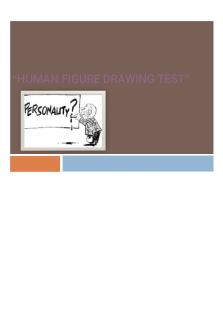
HFD Interpretation
- 42 Pages
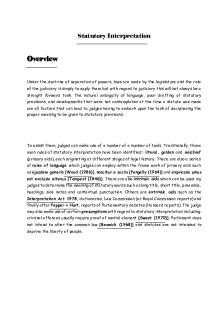
Statutory Interpretation
- 5 Pages

Statutory Interpretation
- 11 Pages
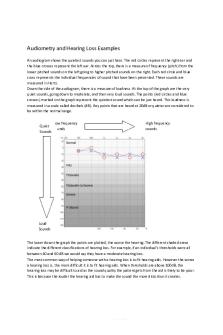
Audiogram Interpretation
- 12 Pages

Interpretation schreiben
- 2 Pages
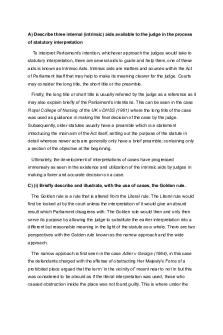
Statutory Interpretation
- 3 Pages

LFT Interpretation
- 5 Pages

Spirometry Interpretation
- 2 Pages

Statutory Interpretation
- 6 Pages

Statutory Interpretation
- 6 Pages

Statutory Interpretation
- 6 Pages

Statutory Interpretation Notes
- 9 Pages

Interpretation Act 1984
- 71 Pages
Popular Institutions
- Tinajero National High School - Annex
- Politeknik Caltex Riau
- Yokohama City University
- SGT University
- University of Al-Qadisiyah
- Divine Word College of Vigan
- Techniek College Rotterdam
- Universidade de Santiago
- Universiti Teknologi MARA Cawangan Johor Kampus Pasir Gudang
- Poltekkes Kemenkes Yogyakarta
- Baguio City National High School
- Colegio san marcos
- preparatoria uno
- Centro de Bachillerato Tecnológico Industrial y de Servicios No. 107
- Dalian Maritime University
- Quang Trung Secondary School
- Colegio Tecnológico en Informática
- Corporación Regional de Educación Superior
- Grupo CEDVA
- Dar Al Uloom University
- Centro de Estudios Preuniversitarios de la Universidad Nacional de Ingeniería
- 上智大学
- Aakash International School, Nuna Majara
- San Felipe Neri Catholic School
- Kang Chiao International School - New Taipei City
- Misamis Occidental National High School
- Institución Educativa Escuela Normal Juan Ladrilleros
- Kolehiyo ng Pantukan
- Batanes State College
- Instituto Continental
- Sekolah Menengah Kejuruan Kesehatan Kaltara (Tarakan)
- Colegio de La Inmaculada Concepcion - Cebu

